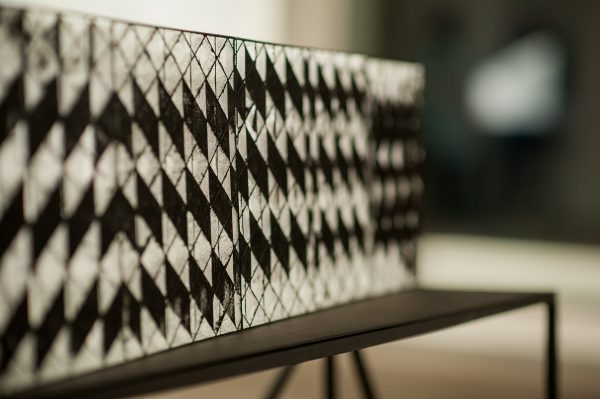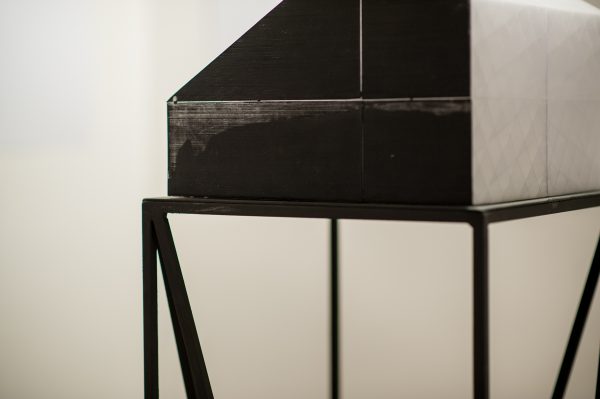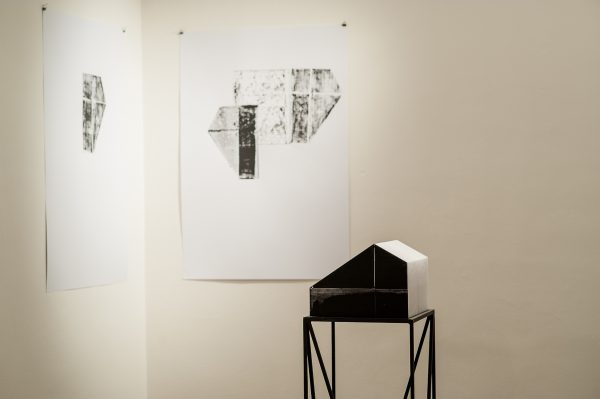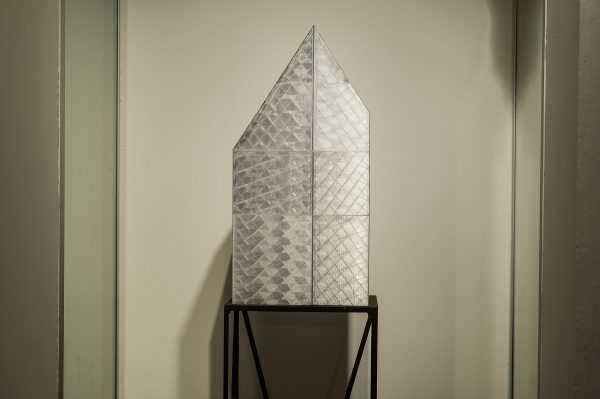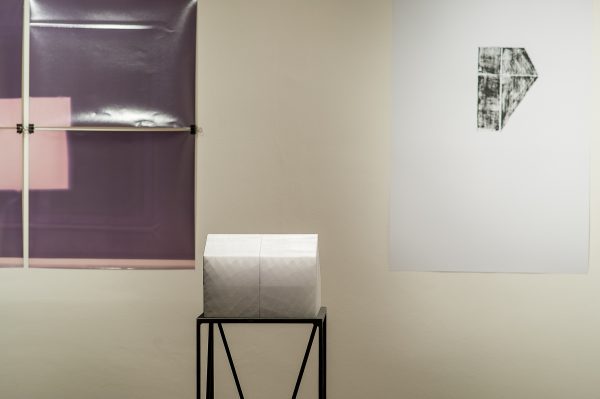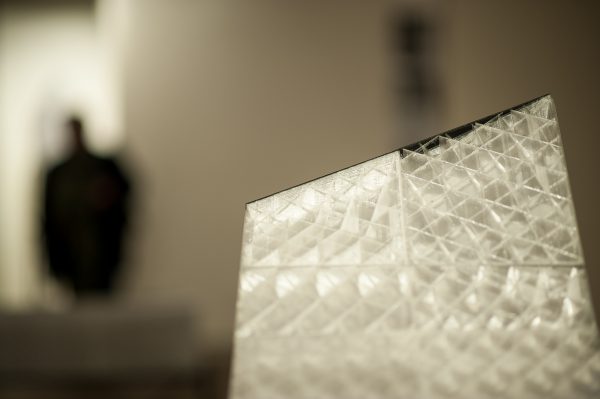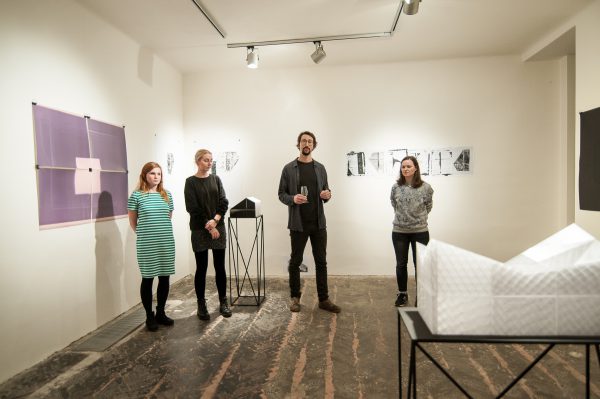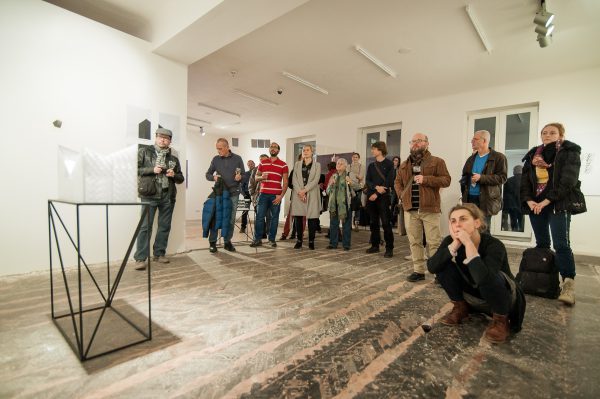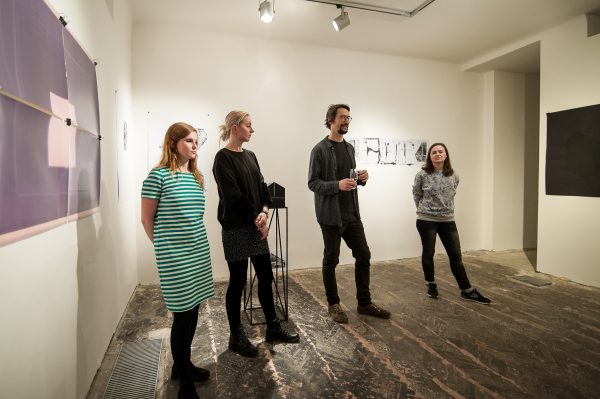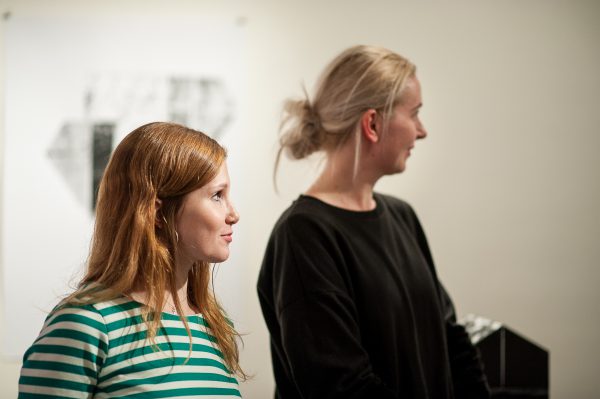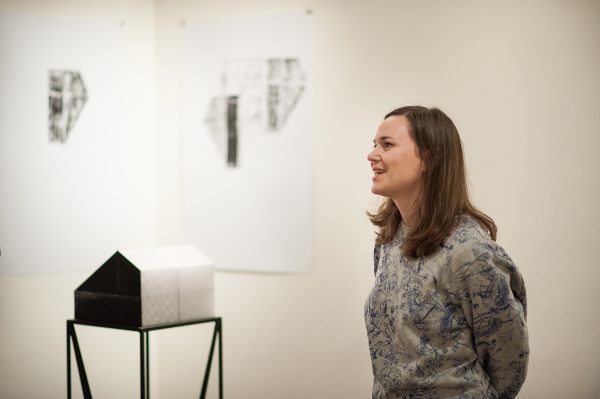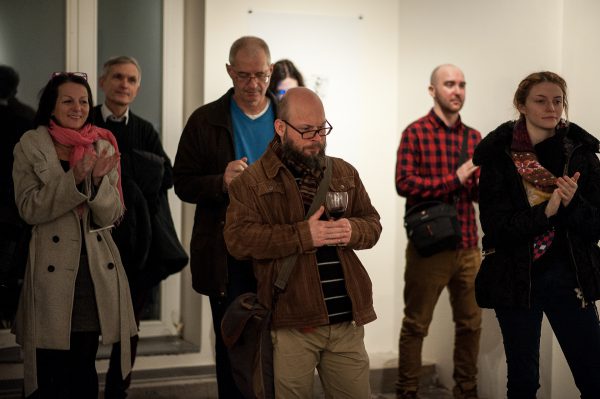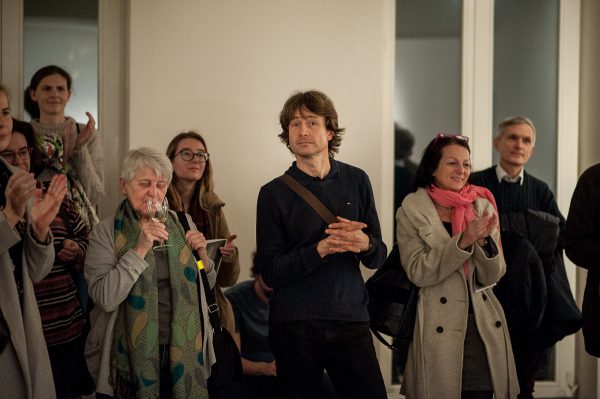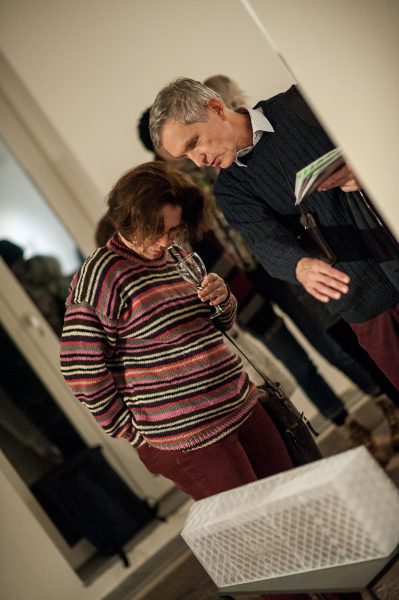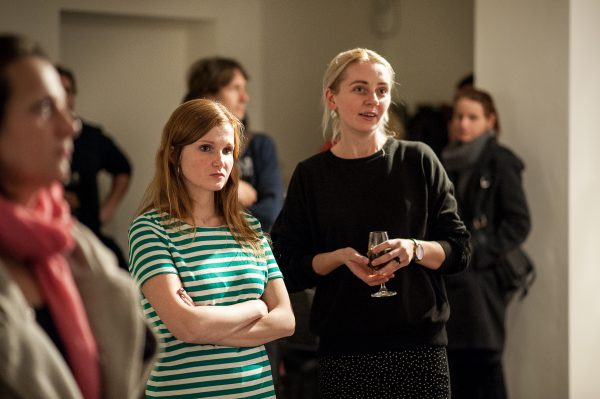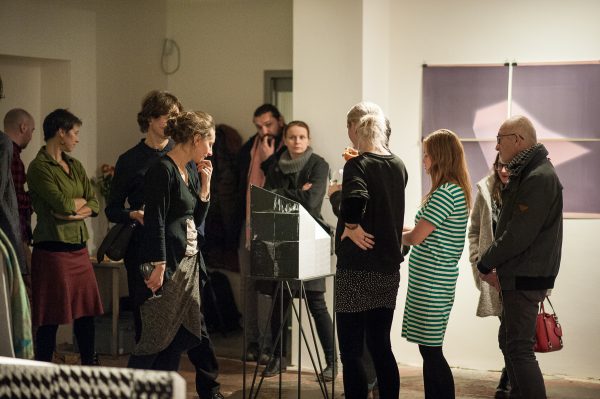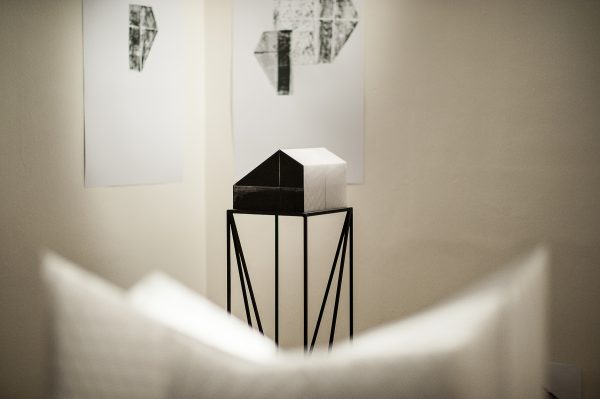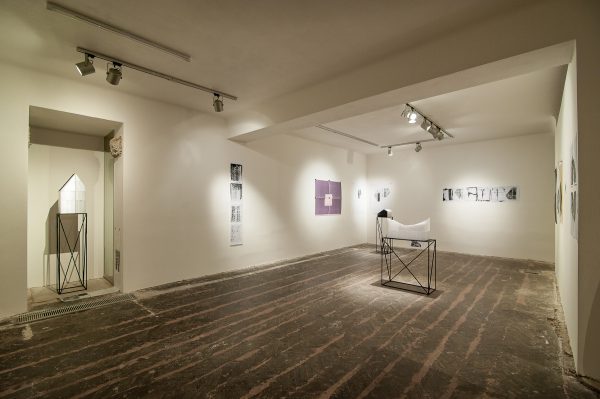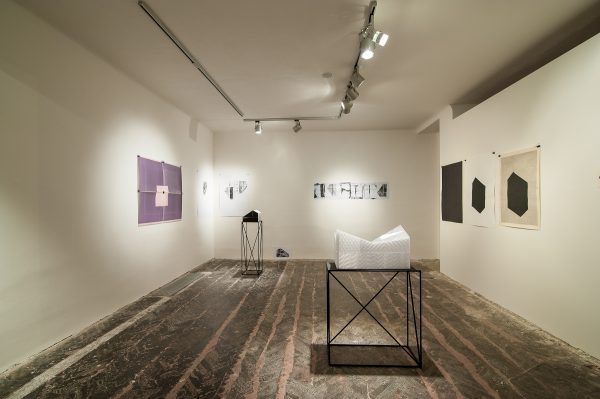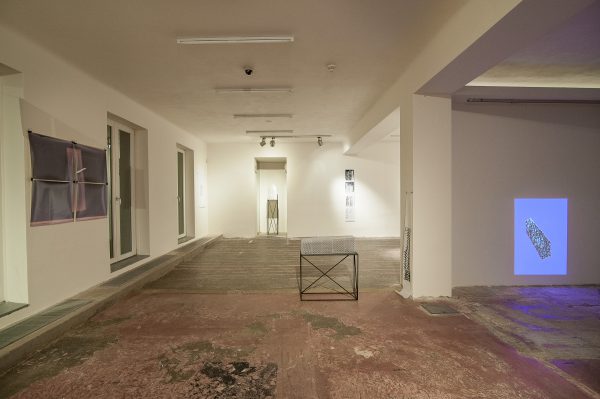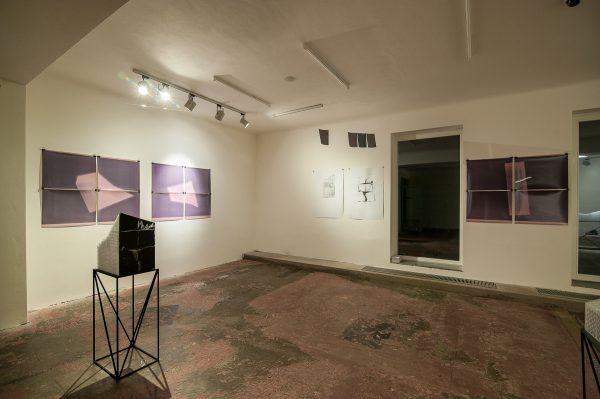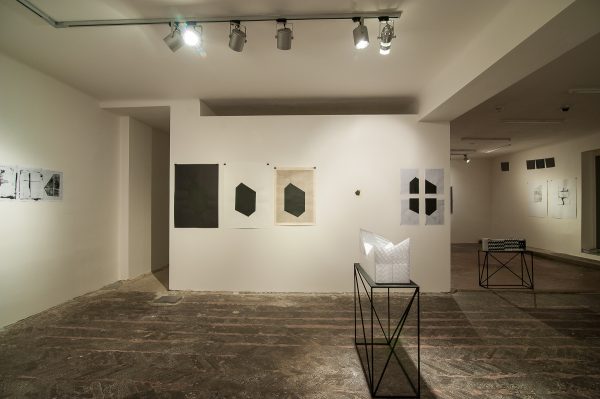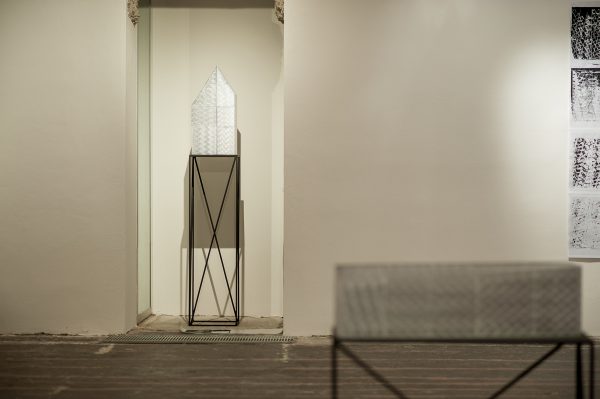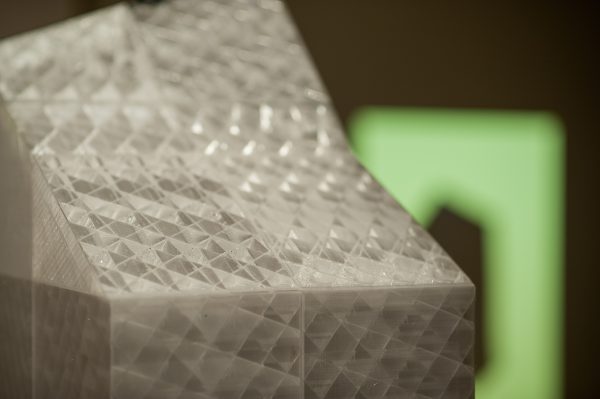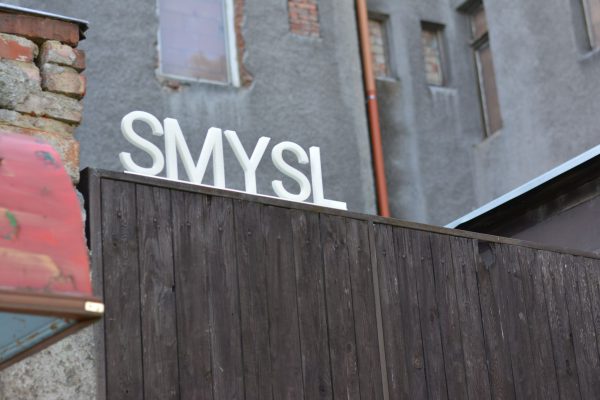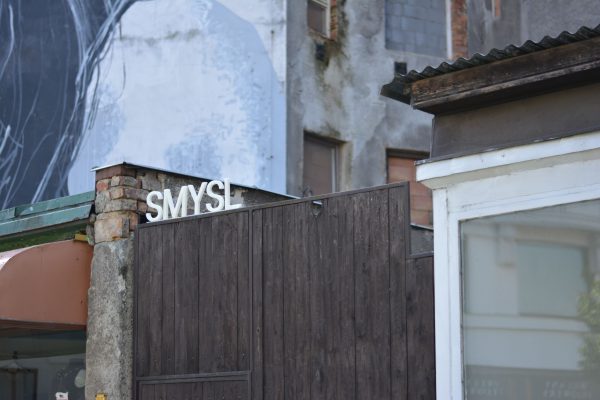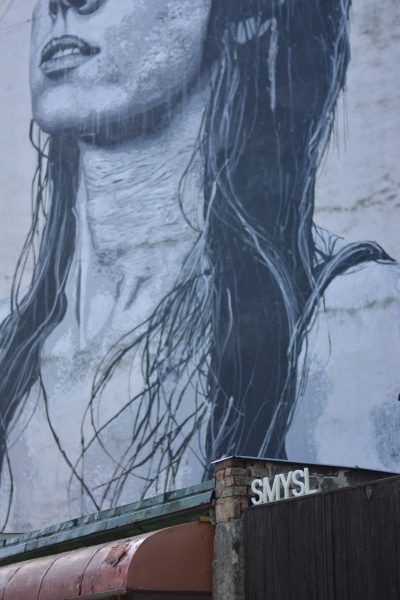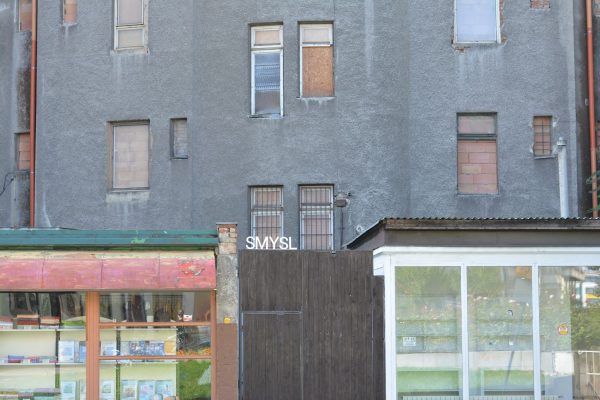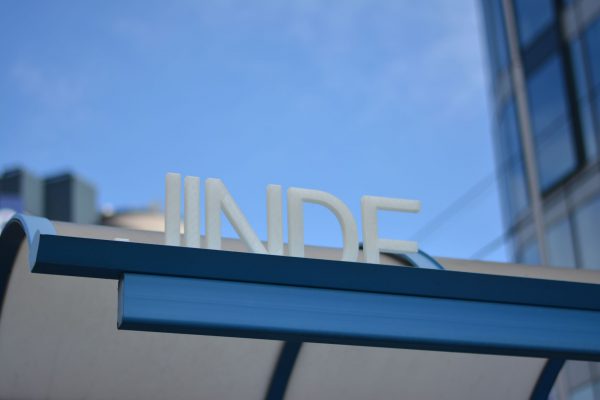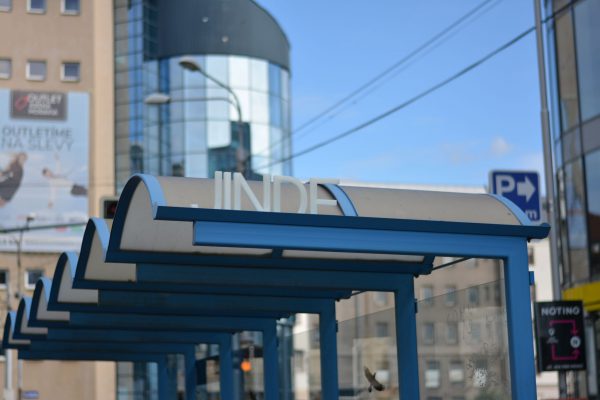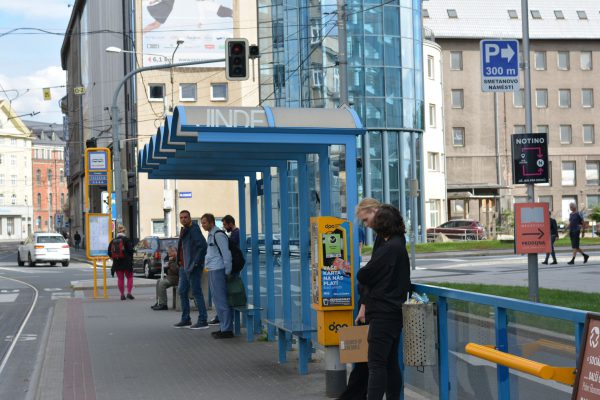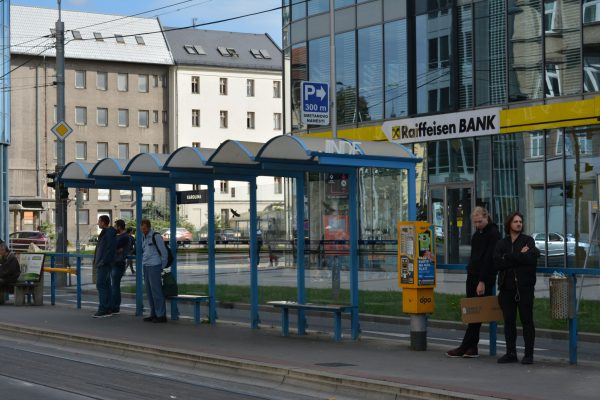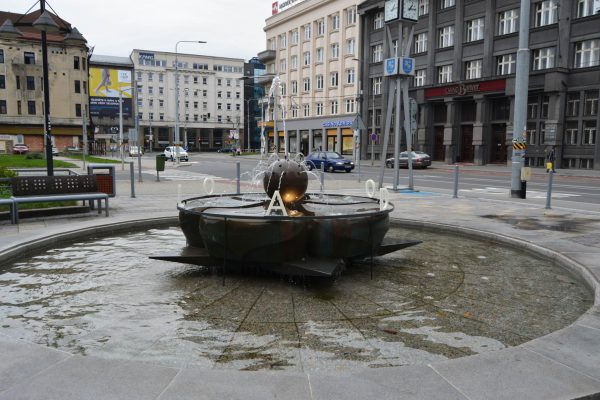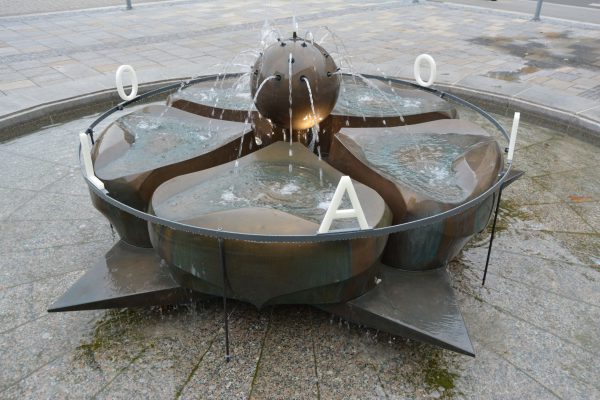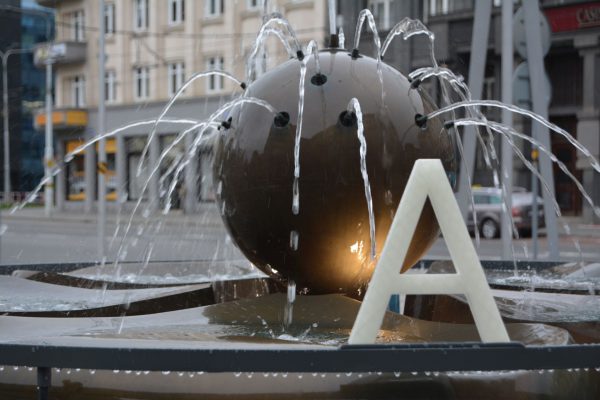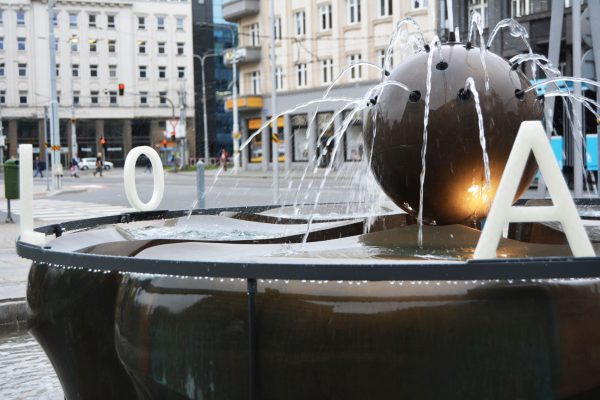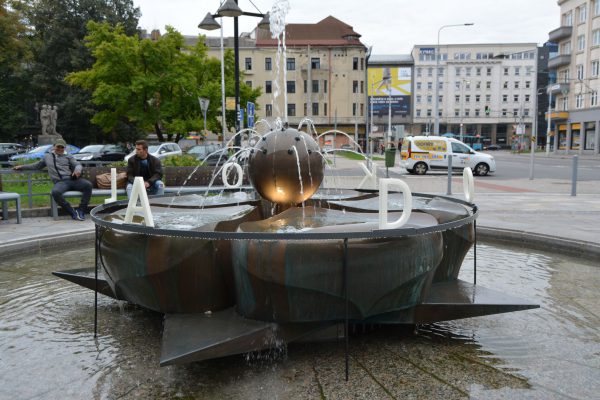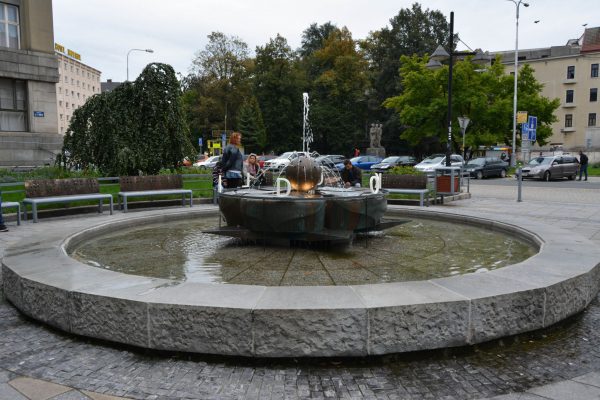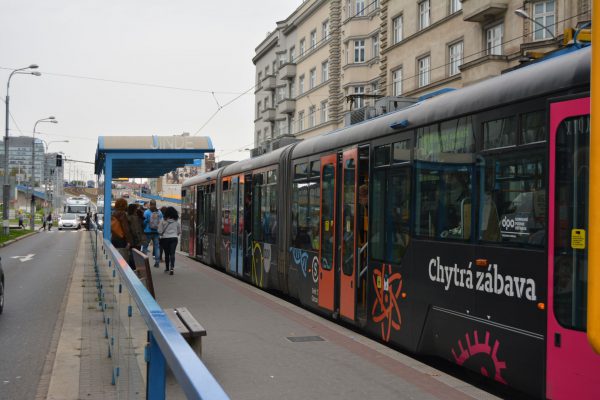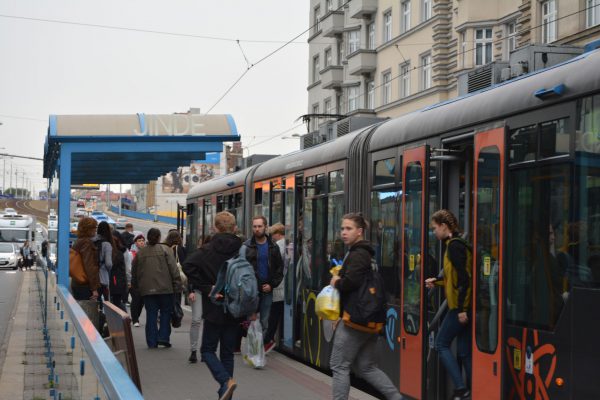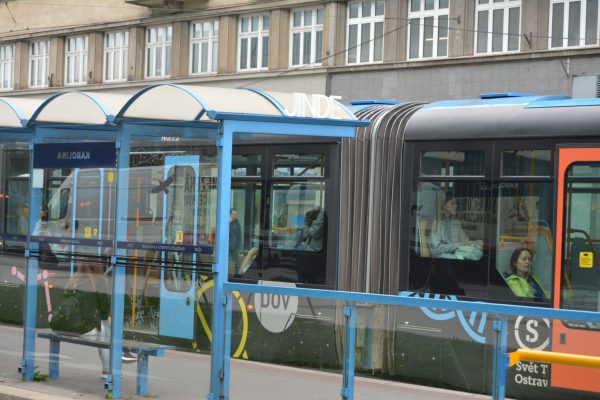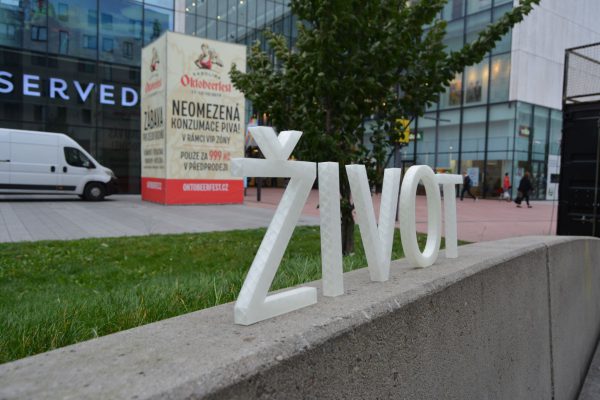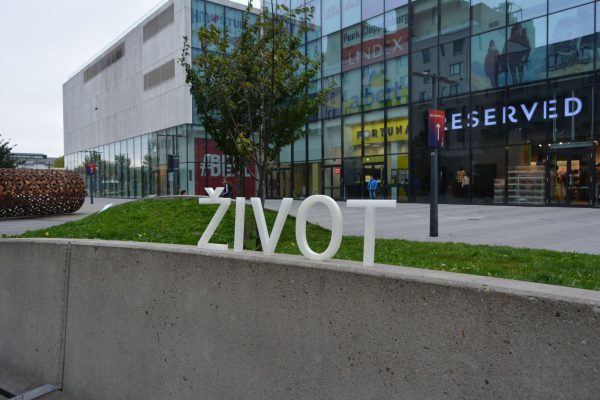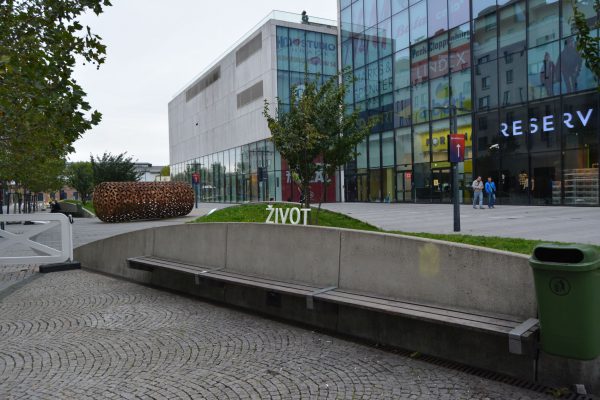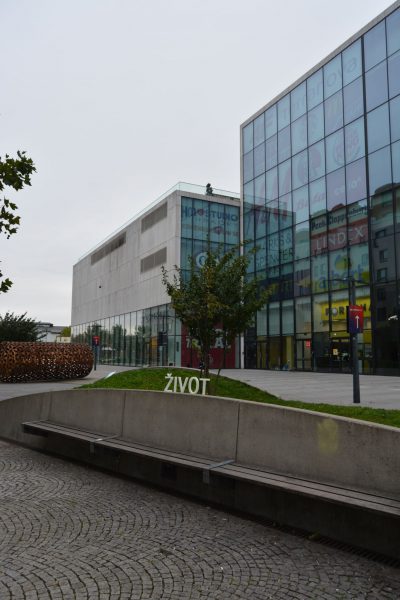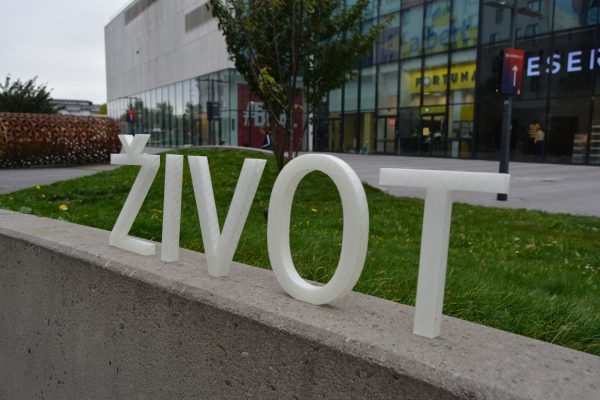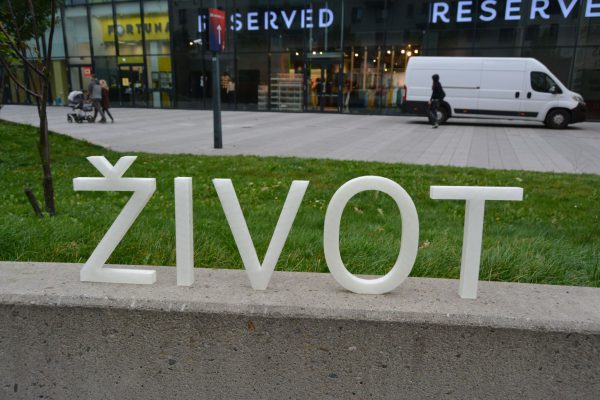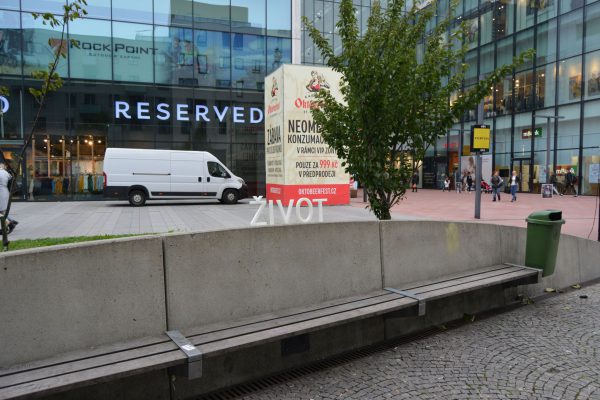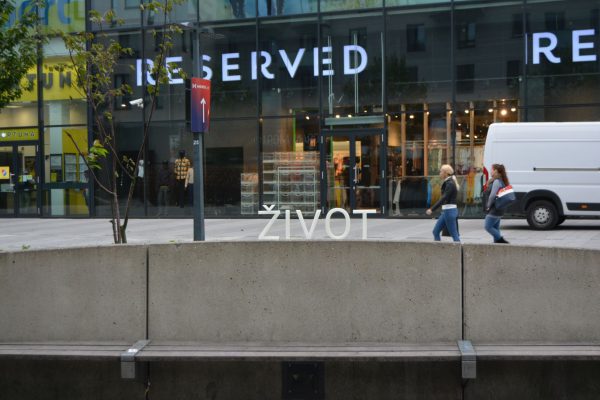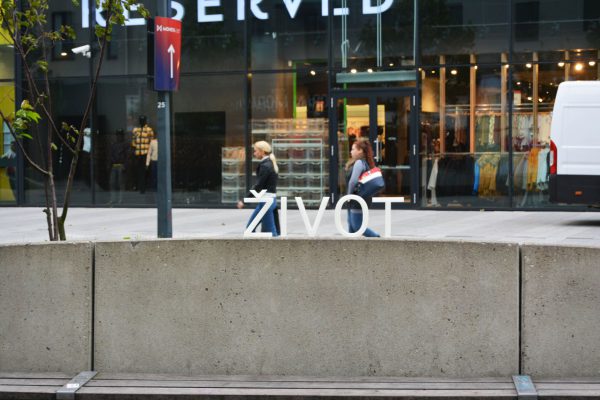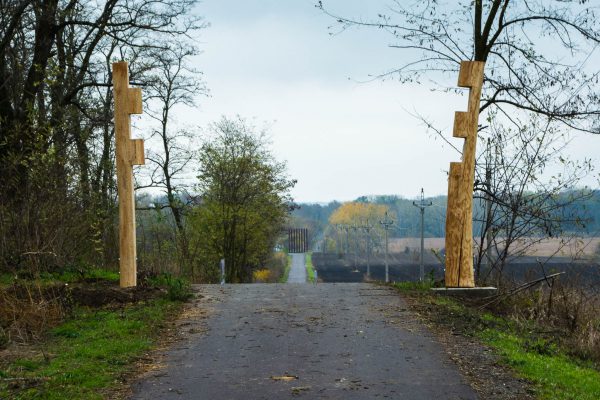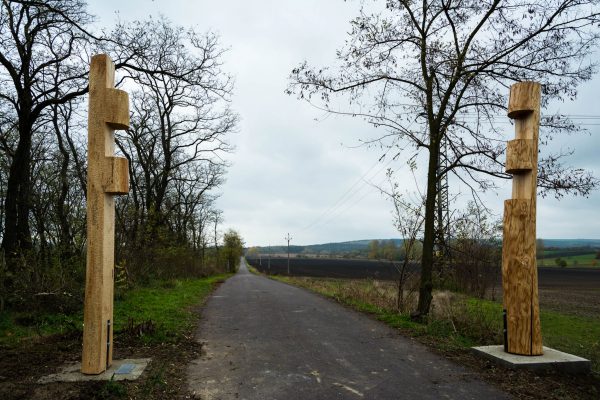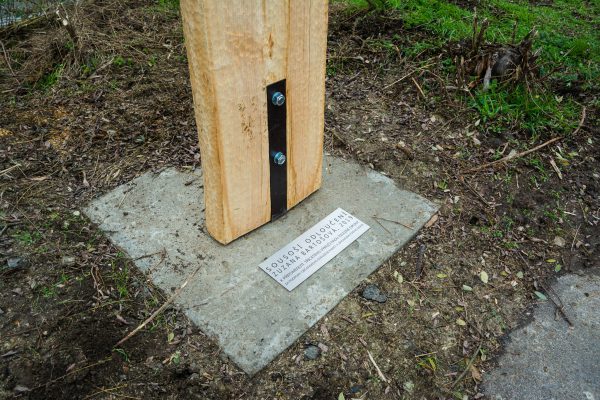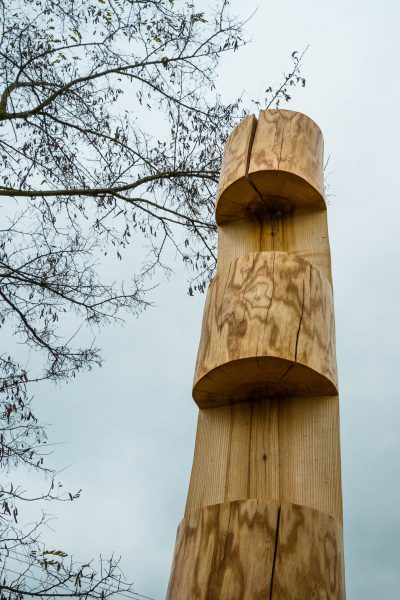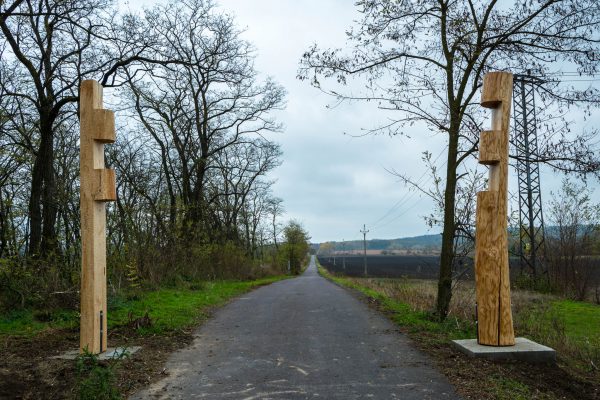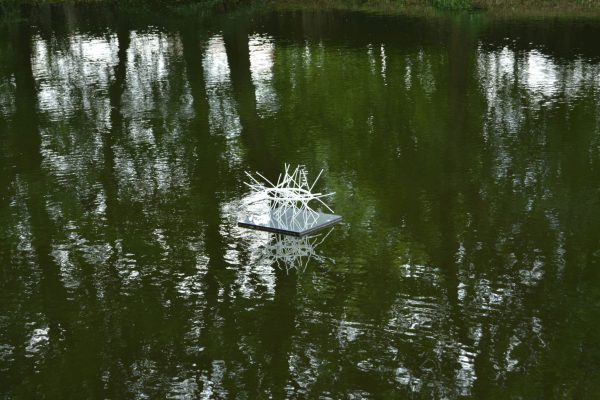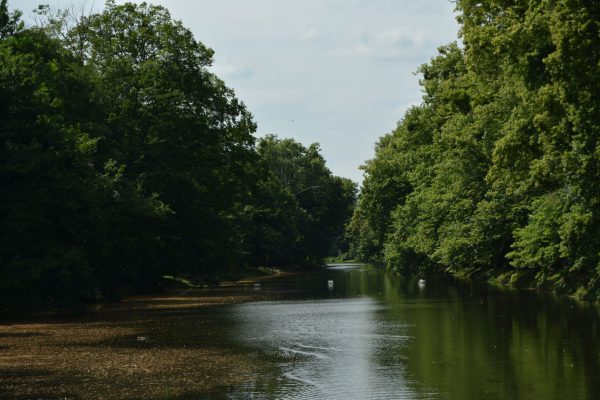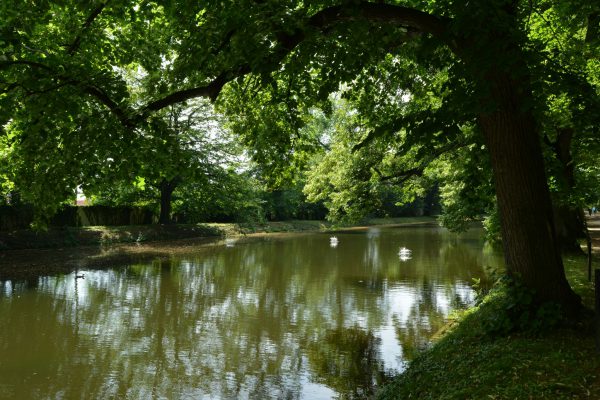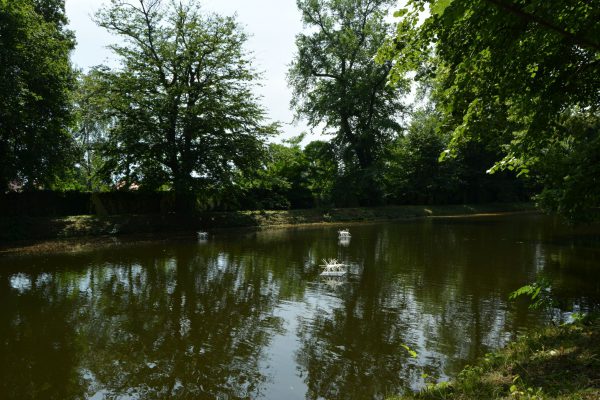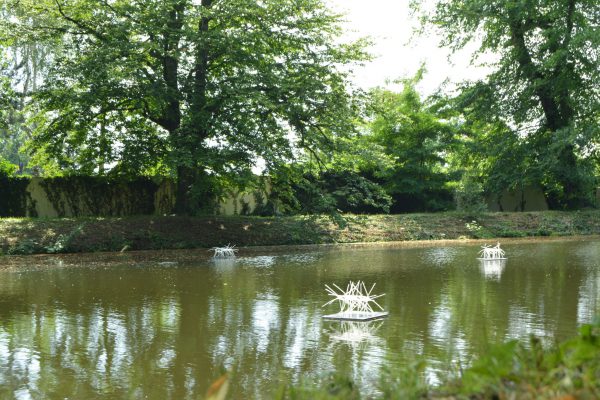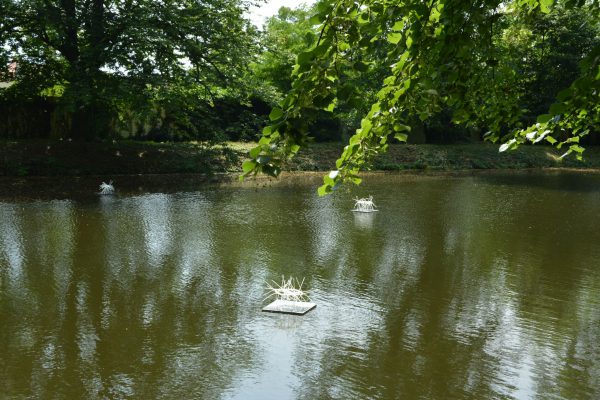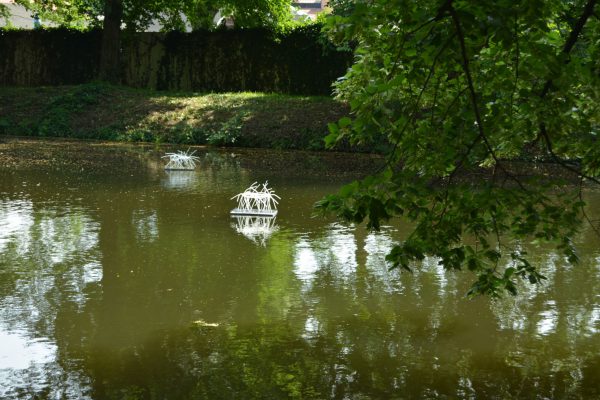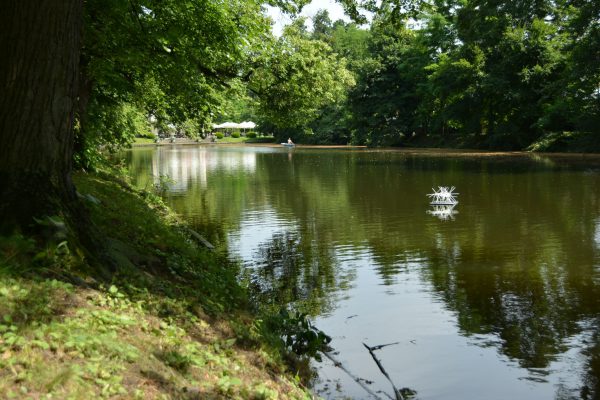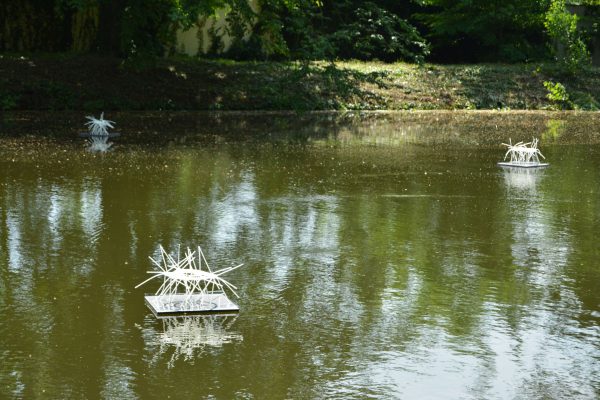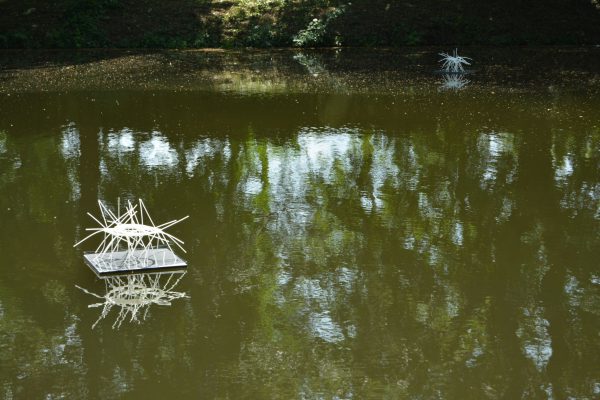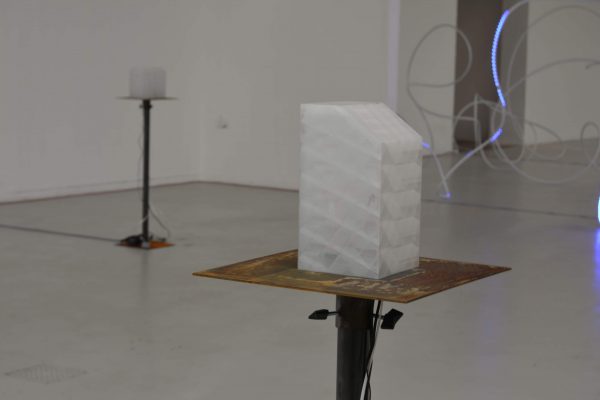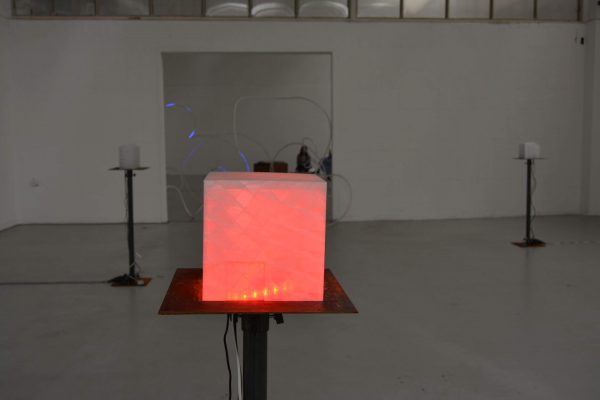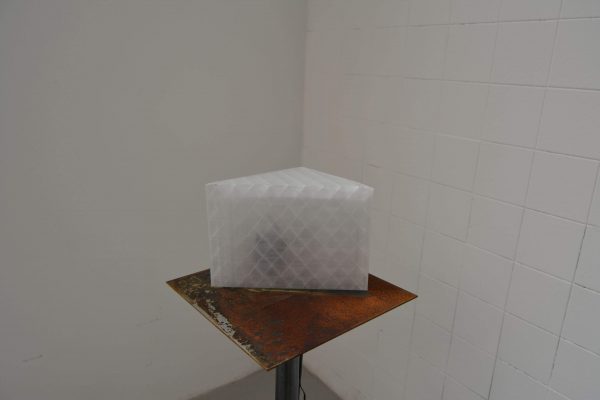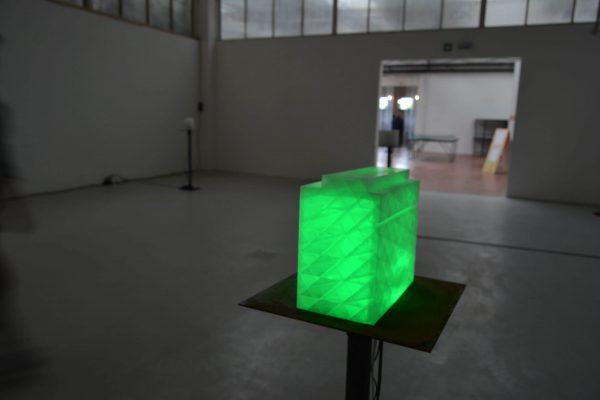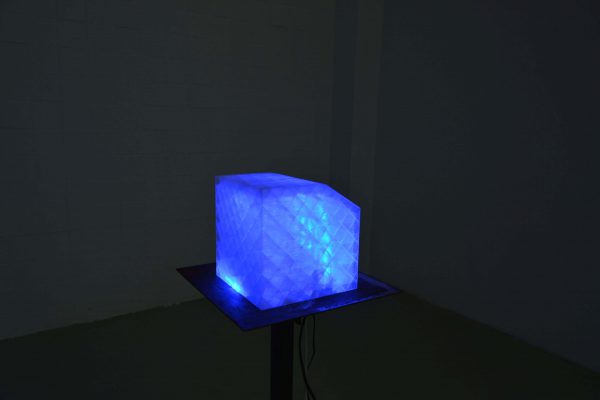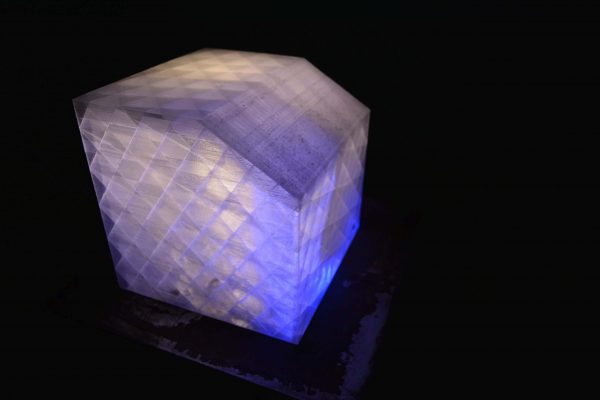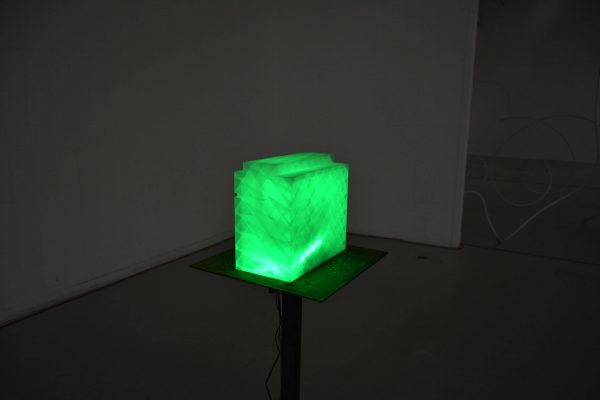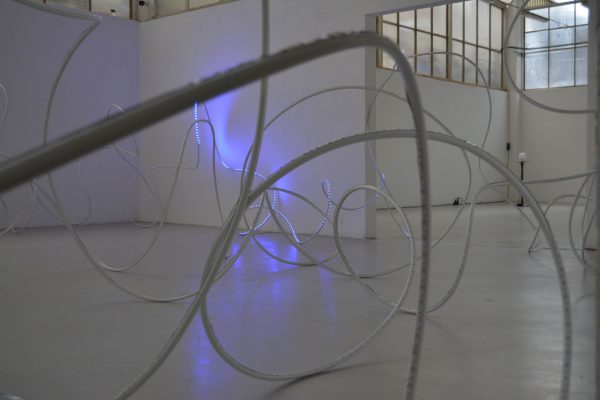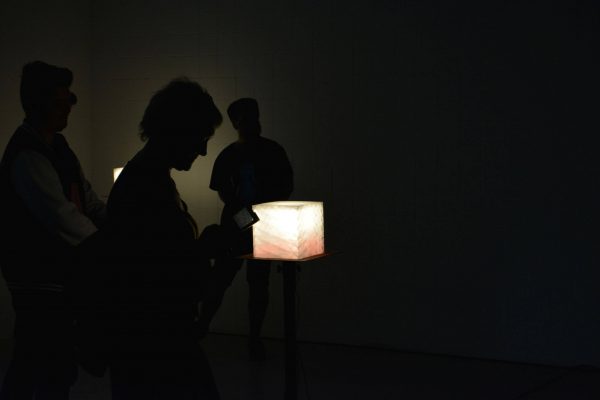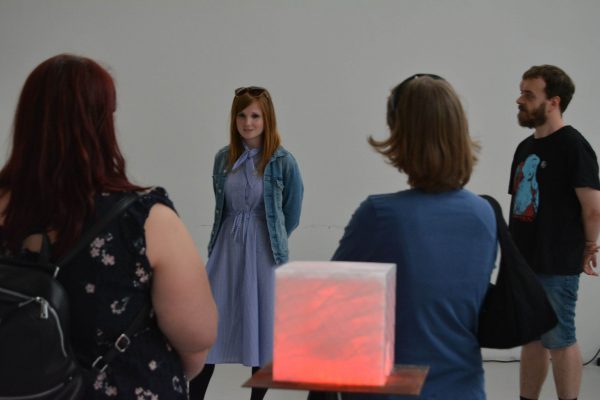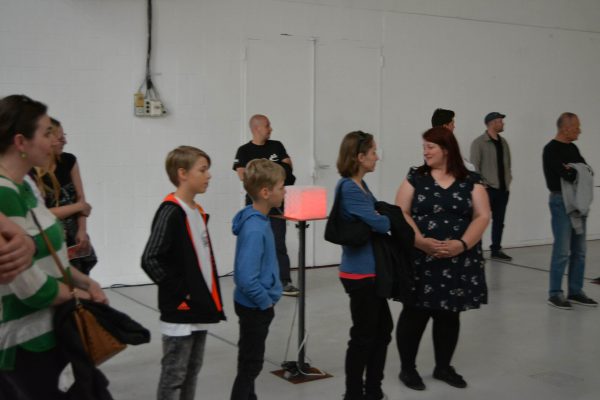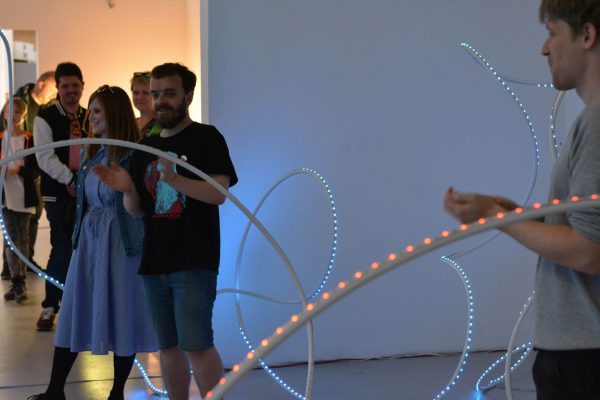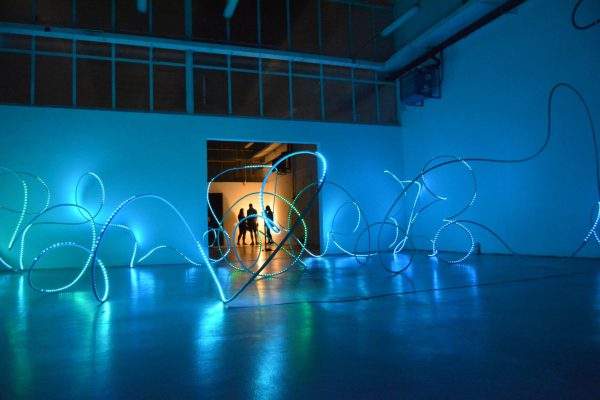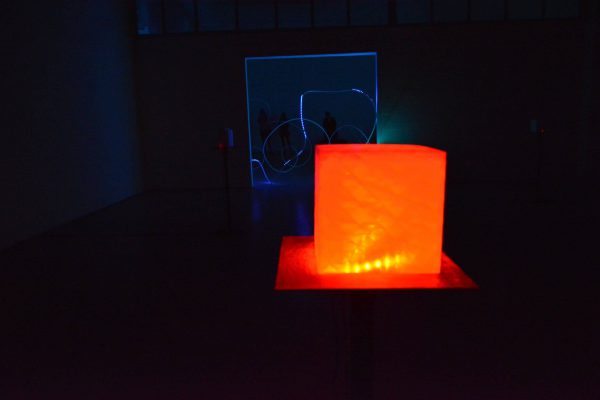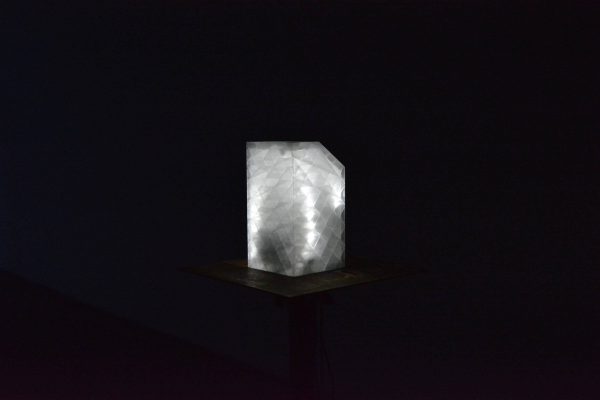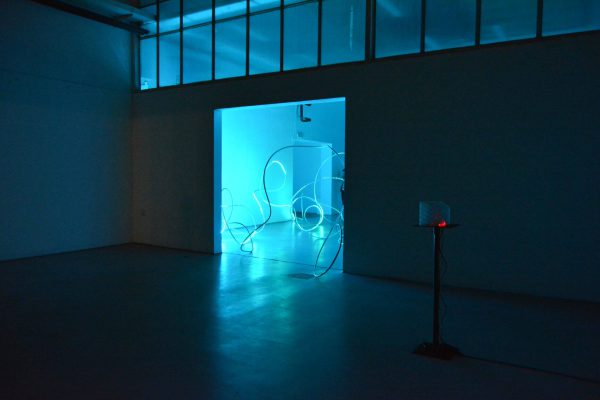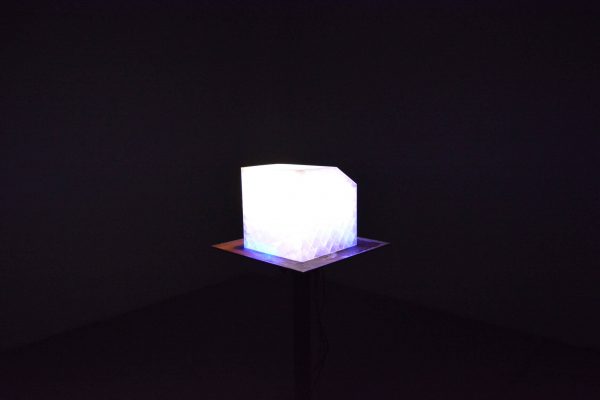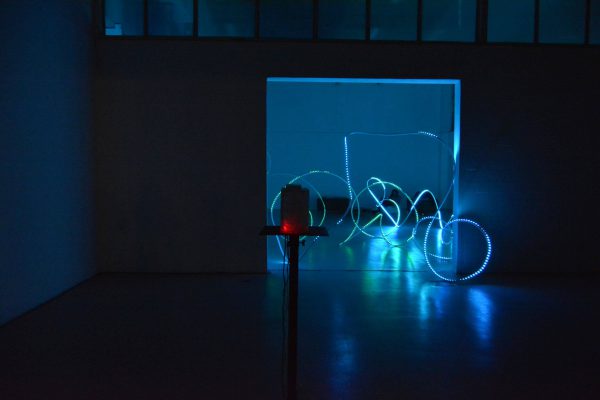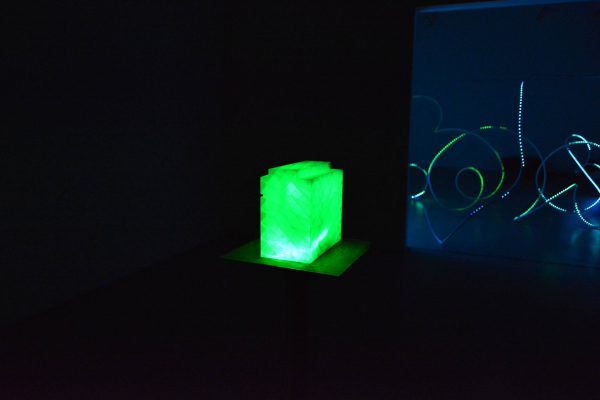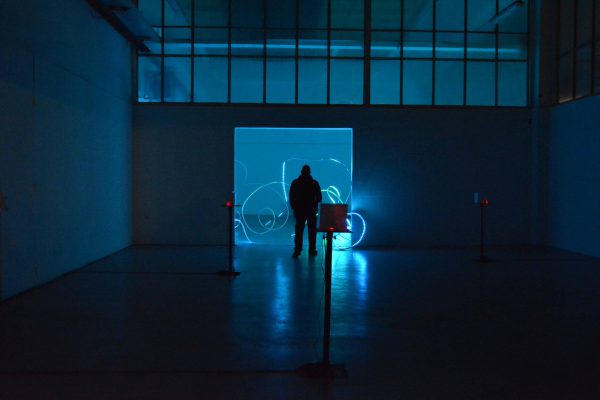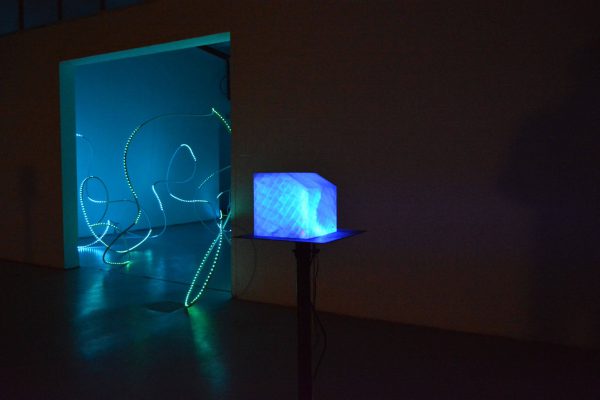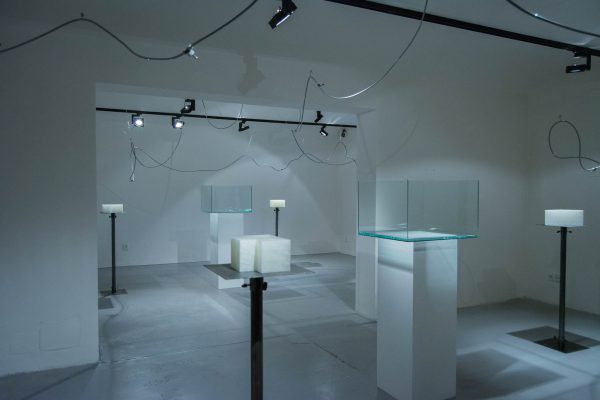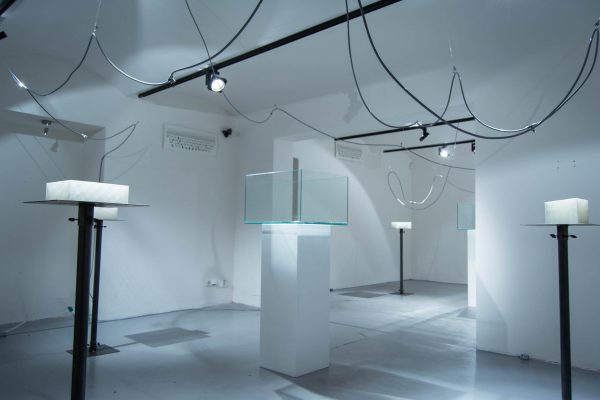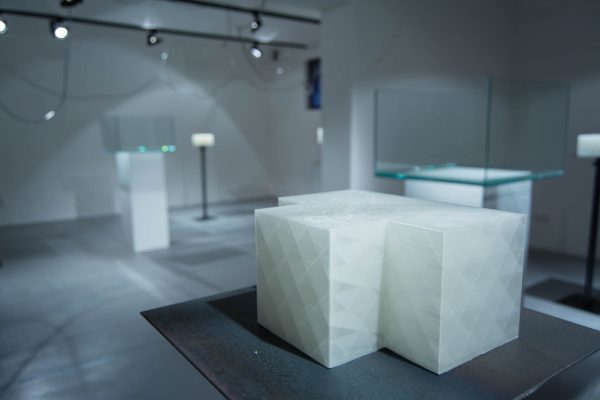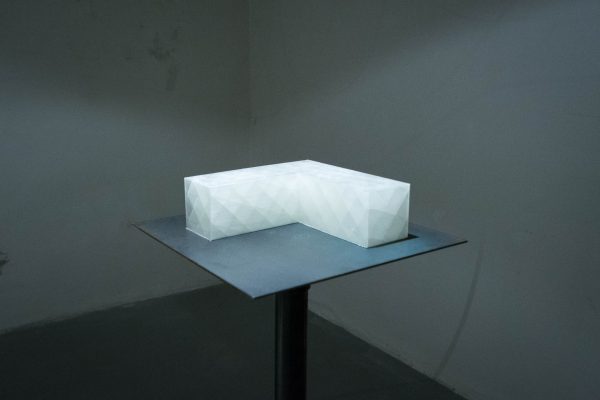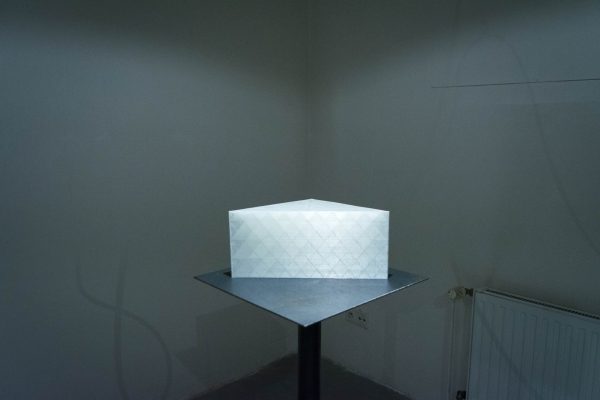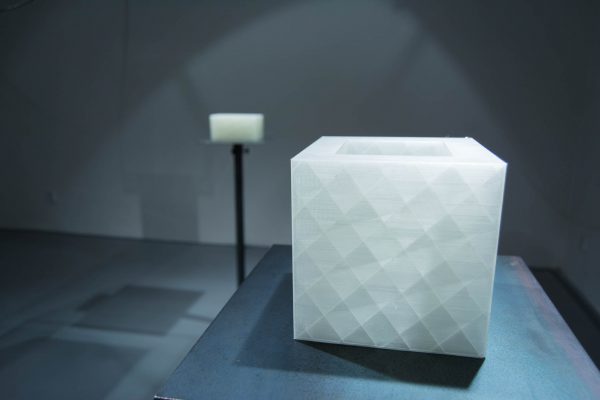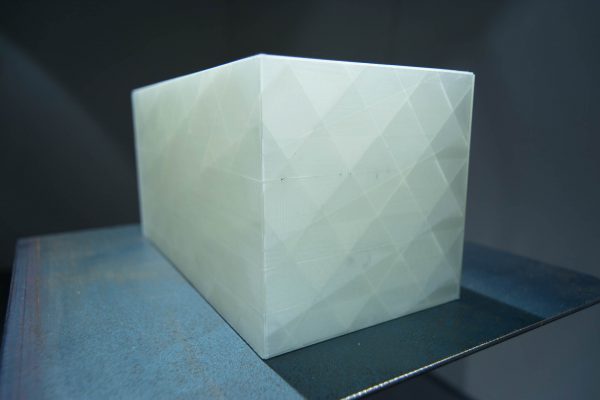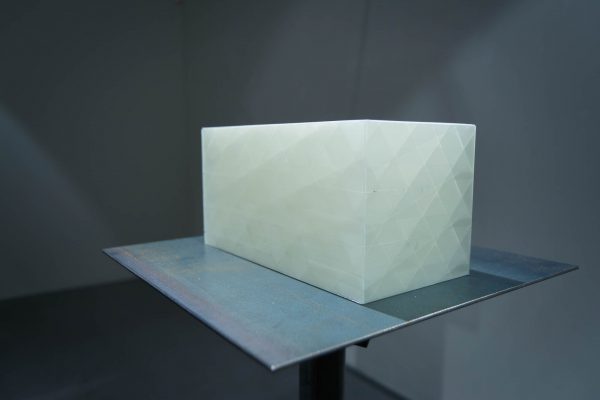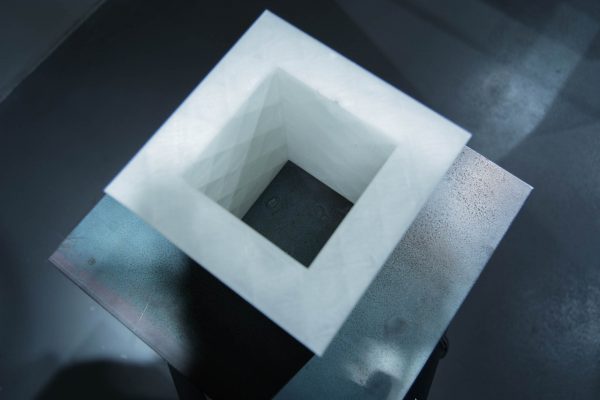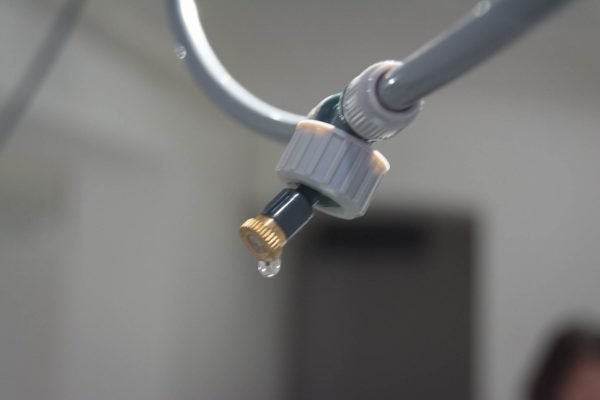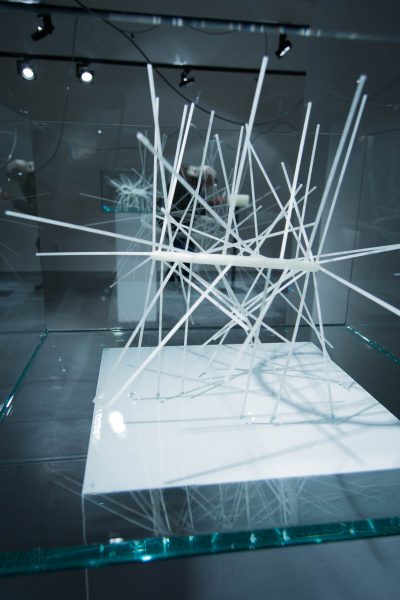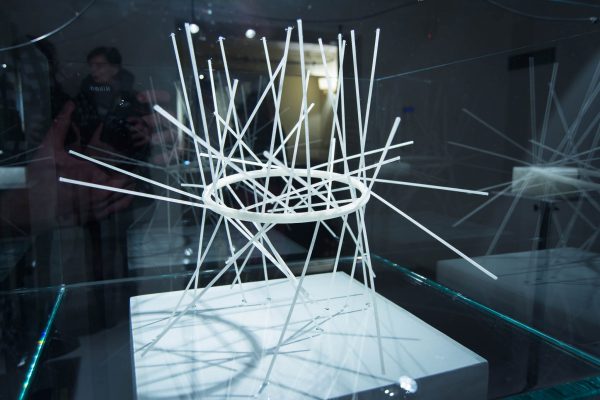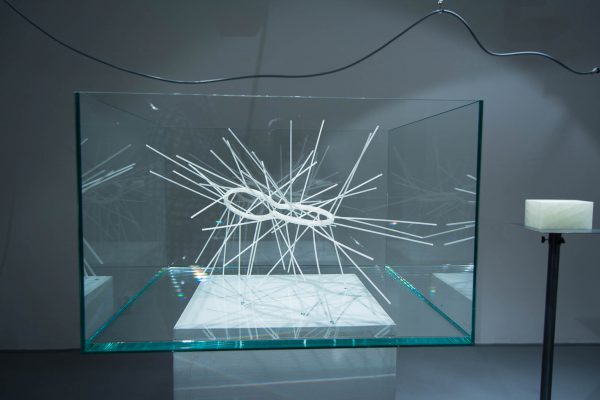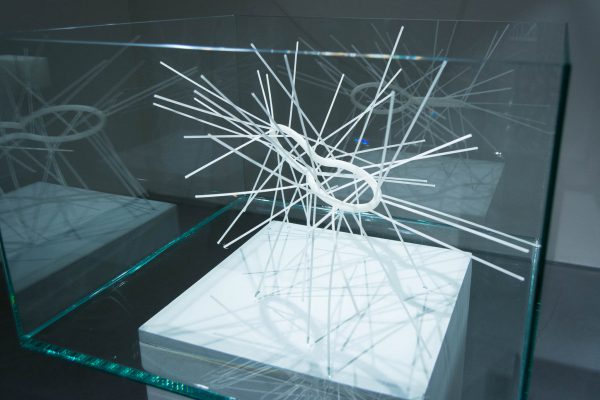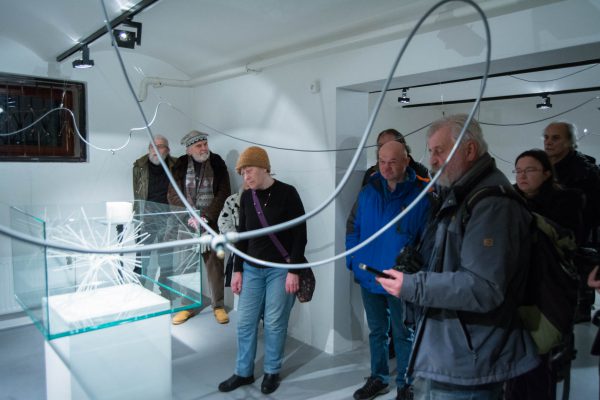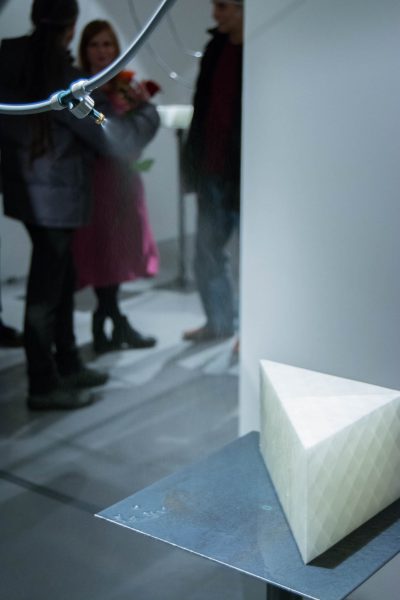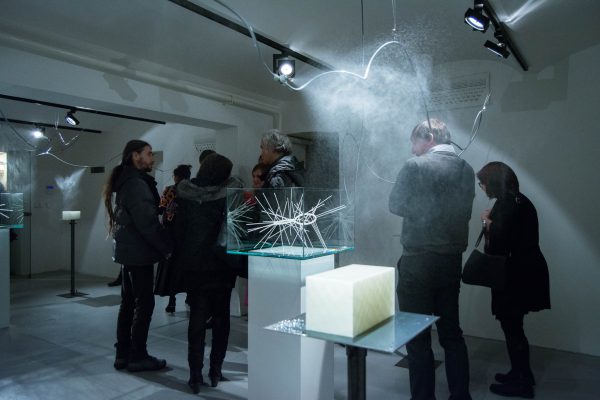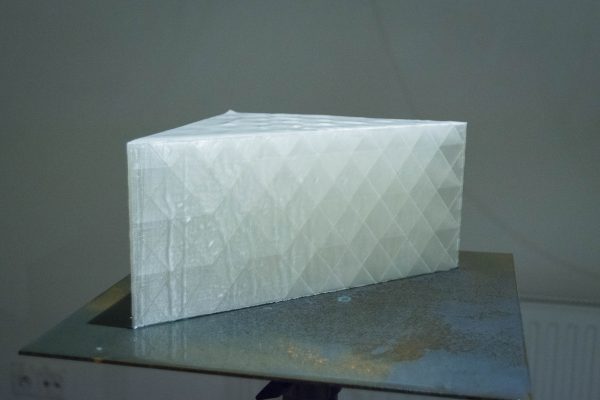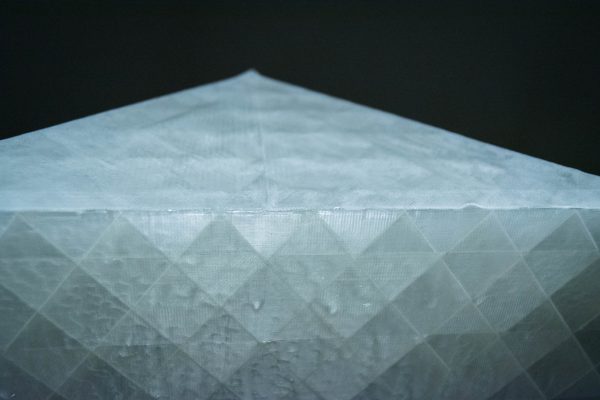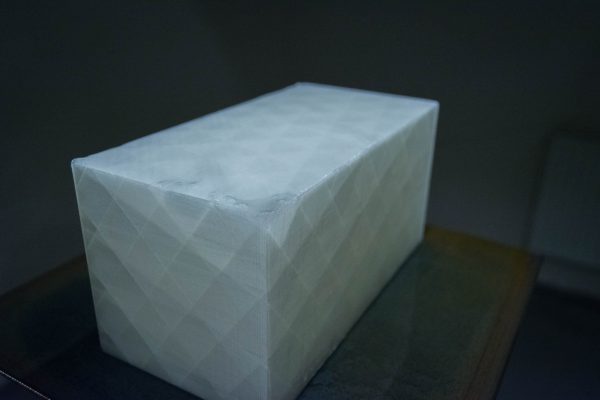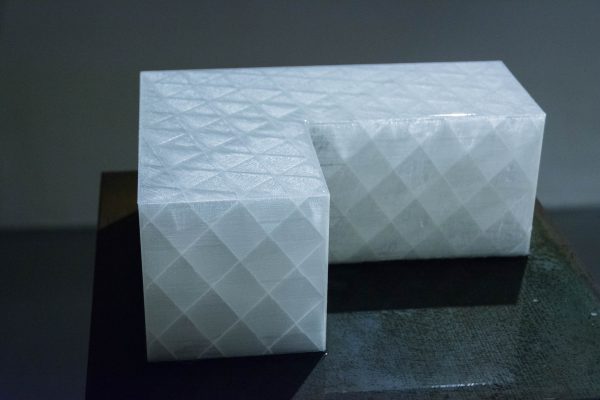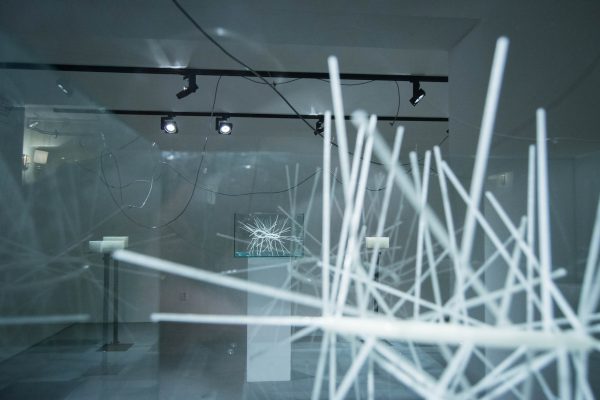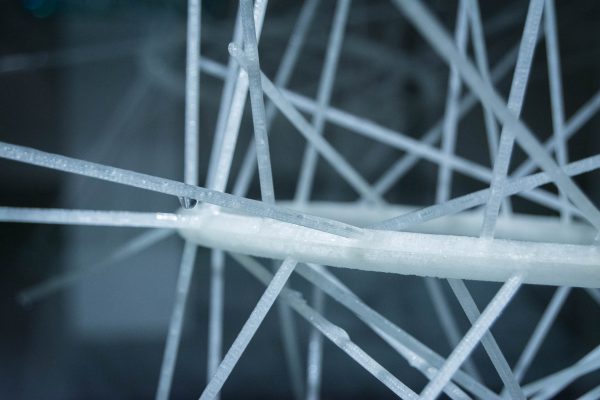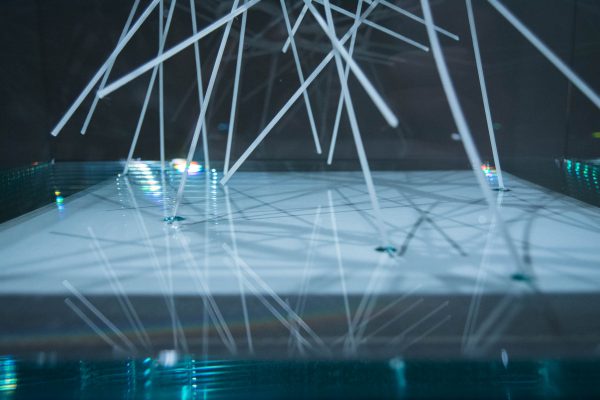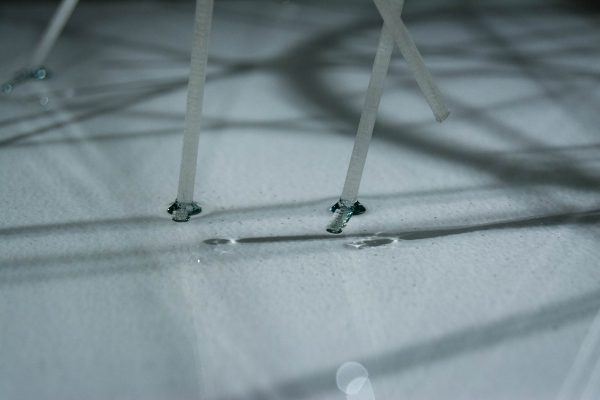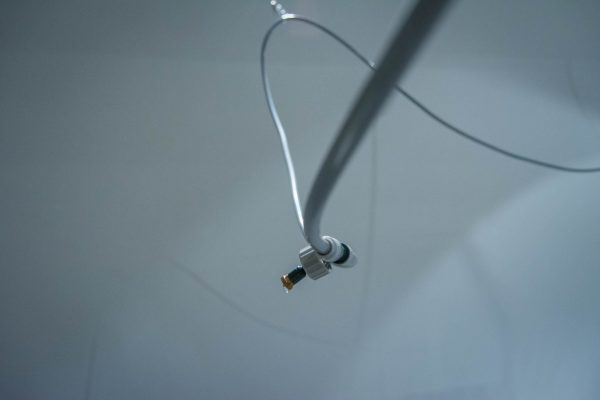Shapeshift, OFF/FORMAT gallery, join exhibition,with Andrea Uváčiková, Brno, 2019
The main theme of Andrea Uváčiková and Zuzana Bartošová‘s project SHAPESHIFT is dealing with object, its representation and remediation. Artefacts created directly for the OFF/FORMAT’s gallery exhibition follow and influence each other. The initial prints are made with the techniques of drypoint, serigraphic drawing and prints of objects in whose Andrea Uváčiková explores possibilities of displaying objects in the space so that its spaciness is suppressed. Zuzana Bartošová then follows and transforms them back into 3D form (after they were being shifted into digitized form) into minimalist objects. The tools determine even the size and colours of segments, of whose the objects are made of. Despite of input of the same data, by using 3 different printers there are slight differences in the segments.
Another medium used are photograms and prints. In their “laboratory discoveries” the authors used finished products – either as matrix for print or by exposure to photo paper. In these approached they use again the attempt of object reconstruction, now by using 2D media.
TXT.5.0, realization in open space, Cuckoo 8, life is elsewhere, in cooperation with Andrea Uváčiková, Ostrava, 2019
The txt.5.0 project consists of a set of five words printed in 3-D using water-soluble material which are placed in public spaces in Ostrava. Text has always been associated with the dissemination of information and it is a basic means of communication. Texts were mediated via print, because it was through this medium that information was most easily disseminated. However, in the “liquid times”, as Zygmunt Bauman calls the present day, such information fades away, and texts and images become fluid, incomprehensible, just like life itself, which is here but also elsewhere. The words chosen by the artists associatively relate to the environment where they are placed. Taken together, however, they also imply a more general message about our lives, but only for a while, until they are lost in the flow of time (and water). The individual writings are accompanied by leaflets on which the text objects are imprinted from four illegible sides, thus freely referring to the abstract language of modernist works, while reminding the origin of contemporary fluid reality in the modernist pressure for innovation and in putting the new above the essential. Tomáš Knoflíček, curator
Separation, realization of sculptural group on the thirty years anniversary of the fall of the Iron Curtain, Mikulov, freedom trail, 2019
The Sculpture Separation is composed of two parts, which evoke in us a feeling of tension due to imaginary materials that would fit into each other when they are joined, even though they are so far apart that their connection is impossible. Separation is located near the town of Mikulov and the place where the Iron Curtain led. The sculpture was launched on the thirtieth anniversary of the fall of the Iron Curtains, as a reminder of everything and everyone who was separated by the regime. The path that leads through the sculptural group can be understood as the intersection of this tension, which would create a system and a person walking along the path, so that he can directly confront the sculptural group. Lime and ash trunks 3 meters high are minimally machined with geometric notches and the surface trunks in the case of linden are roughly cut with a chisel, in contrast to the ash trunk, which is ground to a smooth finish. The sculptures also show another drawing of wood, which is left in its raw form. Despite this diversity of the two halves of the tribes and the distance between them, we see that the statues belong together.
Sculptures for the garden X, realization in the Podzámecká garden, Kroměříž, 2019
The circulation follows a series with the same name, which tries to solve the problem of constantly recurring cycles. This theme is also reflected in these objects, which are partially automatically generated by the computer. These three representatives of never-ending shapes (circle, figure eight and loop) are automatically rotated by rods that hold the shape itself and that rotate in an imaginary spiral located inside. The whole installation encounters transience and a constant cycle around us. It also deals with the issue of the absence of materiality and its importance (insignificance) in contemporary art. The 3D printing technique is used as a sculptor’s tool, which uses it to facilitate the work, but at the same time it is limited by its possibilities and tests its boundaries. The PVA material is destined to perish during normal printing and serves only as a support material and is intentionally selected and used for the production of sculptures, but due to its properties in reaction with moisture and water it is predestined to perish. Hours of work on the buildings are thus irreversibly destroyed by the environment of the Long Pond itself. The gradual dissolution of objects under the impact of drops of water and their subsequent disappearance is a reflection on the very need of man to leave a trace, which, however, often disappears over time.
The individual objects are printed on a 3D printer from a soluble PVA filament, which in normal printing is used only as a water-soluble support for the 3D printing.
Solo exhibition, Industra gallery, Brno museum night, Brno, 2019
The light installation responds to the space of the gallery. Individual objects located in space are inspired by its size, shapes and tectonics. An installation composed of light objects of geometric shapes responds to the movement of visitors. If the visitor come closer, the subject lights up so much that it is almost impossible to see it. Viewers thus directly influence the intensity of light in space. The installation reflects the thoughts about institucional critique and about exhibiting of artifacts in gallery space. The light aspect prevents a closer examination of the objects and the viewer is thus placed in a situation where his activity, so common for the gallery space, is impossible. Objects of geometric shapes are partially automatically generated on a computer and their appearance is defined by a program that determines their appearance, fill, dimensions, etc. Objects are intentionally influenced by 3D printing techniques and do not try to mask this fact and the work directly deal with this aesthetics. This aspect is most visible when the translucent material is illuminated, when the cubic filling of the object is projected on the surface, which is normally completely hidden. The installation is complemented by a sound page, which, together with the lighting of the objects, triggers a sound, which is always created on the basis of a given shape and thus reflects the gallery space, which inspires the objects.
Solo exhibition,Circulation, Industrial Gallery, Ostrava, 2019
Solo exhibition of the Industrial 2019 gallery
The installation in the gallery space called Circulation deals with the specificity of the gallery space itself. The individual objects that are located in the gallery are created directly for the given place and react to the volumes of the gallery, which it tries to supplement non-violently. The translucent material of the objects ensures that the viewer does not notice the seemingly inconspicuous objects of geometric shapes. Another element passing through the space is the hose, from which water can flow in some parts of the gallery. This element can remind us of the hot days of last summer and the feeling of dissolving under the influence of the sun.
The individual objects are printed on a 3D printer from a soluble PVA filament, which in normal printing is used only as a water-soluble support for the printing itself.
The circulation follows a series with the same name, which tries to solve the problem of constantly recurring cycles. This theme is also reflected in these objects, which are partially automatically generated by a computer, they are mainly two objects deviating in their shape, namely a circle and a loop. These two objects were selected as representatives of never-ending shapes, around which rods were automatically generated as supports, which rotate along an imaginary spiral located inside.
The whole installation encounters transience and a constant cycle around us. It also deals with the issue of the absence of materiality and its importance (insignificance) in contemporary art. The 3D printing technique is used as a sculptor’s tool, which uses it to facilitate the work, but at the same time it is limited by its possibilities and tests its boundaries. Objects and their size and appearance are intentionally affected by the size of the print pad and are subject to parameters that determine the printable area and print settings. The gradual dissolution of objects under the impact of drops of water and their subsequent disappearance is a reflection on the very need of man to leave a trace, which, however, often disappears over time.
Material: PVA, plastic hose, water

